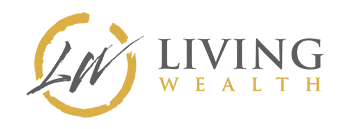We discuss how we assess whole life insurance policies to determine if they’re bad or good policy fit for you. We also share what you can do with your policy if it’s losing money.
This comes up a lot. When you start learning about this infinite banking concept, the first thought is, “Why didn’t I know about this beforehand?” Then when people come to us from somewhere else, we inevitably hear, “You’re telling me I could have been using this policy for all of these things over the last 20 years?”
It comes down to ensuring you are in the right policy first and now how to it them for optimal profits.
How to Determine a Good Policy Fit for You:
- Assessing which is the right policy for you
- Determining when a policy isn’t right for you
- What to do when an existing policy is losing money and not a good policy fit
- Policy premiums and how to understand them
- Matching policy premiums with your goals
- Policy in-force illustrations revealed
- Creating and understanding cash-flow
- How to know when to keep and when to get rid of a policy
- Which policies are and are not right for use with Infinite Banking
Episode Takeaways:
- “That’s really what whole life policy evaluation is about: keeping policies that produce positive cash flow and getting rid of policies that create negative cash flow or very little positive cash flow.”
- “When learning about infinite banking, you must delve deep into it choosing the right policy for your goals.”
- “The goal is always to get you to the point where you’re at positive cash flow as fast as possible. Once you’re there, it’s just making money by moving money as banks do.”
- “Not all policies sold by mutual life insurance companies are right for infinite banking; only specific ones.”
- “When you buy a policy, you become an owner of that policy. You are an owner of the company, and they have to traditional be a participating whole life insurance.”
- “There are these things called universal life policies, which I’m sure people have heard of, universal life, indexed universal life, variable universal life. These policies are a completely different animal.”
Episode Resources:
Podcast transcript for episode 79: Know A Good Policy Fit
Nate: In this episode, we will discuss how we look at whole life insurance policies to determine if they’re good or bad so that you can see clearly if your policy is something to keep or get rid of. Also, we’d like to share with you what you can do with your policy if it’s losing you money and is not looking very good. She’s Holly and she helps people find financial freedom.
Holly: He is Nate, he makes sense out of money. This is Dollars and Nonsense. If you follow the herd, you will be slaughtered.
Nate: Well, today, we wanted to talk about something that seems to come up a lot when Holly and I speak with individuals, especially those that already own whole life insurance policies themself. Kind of the question is when you start learning about this infinite banking concept the first thought is, “Why didn’t I know about this beforehand?” Especially if you already have a policy, like, “Man, you’re telling me I could have been using this policy for all of these things over the last 20 years?” Certainly, if something comes up, is my policy good? Is it bad? Is it something I should keep? We’re going to talk today how we look at policies so when we’re talking to you you’ll kind of get an idea of where we’re coming from and then you can determine if it’s something you should keep or not, and then we’ll also discuss what to do with your policy if it’s losing money or it’s really not profitable at all and kind of go from there.
Holly, what do we do a lot of the time when we look at a policy and someone sends it to us? Or even if you buy a policy from us, how are we looking at policies to determine if it’s something that’s good and worth keeping or if it’s something that’s not?
Holly: Well, what we really do, Nate, is we actually look at how much premium the individual is putting into the policy and how much cash value growth is occurring when they put that premium in and if it’s greater, which is really the goal. If they’re putting in $2,000 and they can borrow out $4,000, then that’s a good policy because their money is obviously doubling, if you want to do it that way. What we really are trying to see is if they’re putting that money in and if they can only borrow out… I’ll just give a perfect example. I have an individual that wanted an inforce illustration and it’s whole life policy. It’s a good policy in your mind’s eye, but they’ve been putting $50,000 in for seven, eight years and they can’t even borrow $50,000 out when they put $50,000. To me, I would be like, “At this point, that’s not a great policy.”
Nate: Exactly. I think that what we’re really after is cash flow. That’s really what this is all about, keeping policies that produce positive cash flow and trying to get rid of policies that produce negative cash flow or very little positive cash flow, so exactly right. Whenever I’m taking a look at a policy and someone says, “Should I keep this policy?” It wasn’t designed for infinite banking, it was designed to focus on cash value, but maybe it’s 15 years old and they’re putting in $2,000 and it’s growing by 5, $6,000, they may have never realized that. Holly, the people I talk to, they don’t like premiums. Until you learn about infinite banking, your mentality towards the word “premium” is definitely a negative view.
They’ve been paying this $2,000 premium for 15 years and they don’t like. They don’t really want to keep doing it and I think a lot of times they bring it to me to say, “Please tell me that there’s something better I could be doing because I don’t like it.” I look at it and I’m like, “Guys, I think you’re missing out. I think you’re missing something here. Every time you’re paying this $2,000 premium, your policy is growing by $4,000. That means just by moving money from one pocket to another, from a checking account to the policy, you can create $2,000 of positive cash flow with no tax, with no risk, and we can use it. That’s how we determine if it’s a good policy.”
Now, I will put a disclaimer there. If you have a policy that has like $200,000 of cash value and you’re putting in 10,000 of premium but it’s only growing by like 12,000, it has positive cash flow, but if it’s really a tiny amount of positive cash flow compared to the overall amount of cash value that’s sitting in there, then we might just see some inefficiencies. Just because it’s positive cash flow doesn’t always mean it’s a perfect, awesome policy to keep, but a lot of times it’s a really good indicator and to say, “Yes, this is something that’s worth keeping.” Whenever you come to us, learning about infinite banking, you really want to delve deeper into it. You already have a policy.
This would be true, by the way, even if you just start with infinite banking. That’s actually what we’re after, Holly. In every policy we start, we’re just trying to get to the point where we’re positive cash flow as fast as possible because once you’re there it’s just making money by moving money like banks do. We’re just moving money into a policy we can move right back out and we’re making positive profit in that. If you come to us and you say, “Yeah, I’ve got this policy”, that’s what we’re going to look at. You send it to me, I’m going to say, “Yeah, every time you make a premium this is how much cash flow it produces. I don’t think I’d get rid of that if I were you because of how profitable it is”, and especially if you’ve had it for over 10 years. I hope that’s the case.
Holly: I would hope that as you listen to Nate and I talking, you understand as long as you’re viewing that premium as a payment, it has that negative mentality. We’ve talked about that before, but if you really view it as a premium deposit, and I said to an individual the other day, “Can you go to any bank and put $8,000 into your savings account, make a deposit into your bank account, and be able to pull out $10,000 when you had only put eight in?” They’re like, “We could never do that. Do you have a tool or vehicle you can use?”
We use whole life insurance to do that where you can put in less money and pull out more. It’s that profit, like how much profit do we get? We’re not looking at, like Nate said, just a couple of thousand dollars or $500,000. You really want to look at a profit that over long term is really growing for you way more significantly that just a couple of hundred dollars or a couple of thousand there.
Nate: There’s another thing we can mention and that is the only policies that are used for infinite banking purposes or specific ones, they’re policies sold by mutual life insurance companies. When you buy a policy you become an owner of that policy, owner of the company, and they have to be traditional participating whole life insurance. There are these things called universal life policies, which I’m sure people have heard of, universal life, indexed universal life, variable universal life. These policies are a completely different animal. We don’t suggest using them for infinite banking and they can be very deceptive because in some of these policies, you might send me an illustration with the universal life policy and right now today it looks really good, but as far as I’m paying a premium and don’t give me more than I pay.
A lot of times when you look out into the future of that policy, you’ll see the policy starts to implode. The cash value starts to deteriorate and come to zero and you lose everything you have put in. I know that sounds scary, but how many times I’ve seen this happen is remarkable and how many times this happens in the universal life world is actually more than you would ever imagine. It’s a shame that it occurs, but all of this to say that’s also what we’re looking at, and especially in those types of policies is not what happens right now, but if it’s a universal life where it actually gets more expensive to own as time goes on, those things are completely different. Those things are really what give I think life insurance a bad name overall as far as like a stigma at times is these policies that end up imploding and losing all their money, which is possible.
With those types of policies you actually have to look out into the future as well and say, “Hey, I know it may be profitable today, but what does it look like when you’re 75? Is there still even going to be any money left in it?
Holly: Or, the individual, Nate, has this policy and really their only hope at that point in time if they’re in their 70s or this or that is that they’re hoping they either die so they can leave a legacy or something to their family or loved one, or they have no idea how they’re going to keep affording this policy and making it work for their family. When they bought it they thought they were doing the right thing.
Announcer: Have you ever wondered how to stop worrying and just make and keep more of your money? We believe in challenging the status quo. We believe in defying conventional wealth tools while maintaining traditional values. After all, most of those conventional tools only ever seem to make someone else on the inner circle rich. You can become debt free, in control, secure, and achieve financial significance. Private family financing can be used in your life and even your business.
Let us help set you free from worry. Visit livingwealth.com/freedom to receive your free copy of The Tree of Wealth. You’ll learn about the tools banks themselves use and rarely speak about openly. These are the strategies used to launch Disney, JCPenney’s and countless successful families. For more than 46 years, Living Wealth has focused on treating clients with respect and honesty while helping them achieve financial freedom. Learn how to turn your hard work into significance. Visit livingwealth.com/freedom to instantly receive your free copy of The Tree of Wealth. You’ll be enabled to have cash today and in the future. It’s more than mere infinite banking. It’s private family financing. Don’t let banks and Wall Street dictate your financial future. Go to livingwealth.com/freedom to instantly receive your free copy of The Tree of Wealth. Now, back to Nate and Holly.
Nate: Now, we’re going to switch gears and talk about something that you may or may not heard of, is really what to do, the options you have. The best option is let’s have a good policy and you send it to me and it’s awesome and it’s just making you a lot of money. You didn’t even know it. That’s the most fun conversation, Holly, is like when someone sends a policy that they think kind of sucks because they’ve never really looked at it. They didn’t know how to read it, and I open it up and I’m like, “Yeah, your premium is $3,000 and it’s growing by 8,000. That means every time you write a check for three grand every year the policy grows by eight grand.”
That’s a great conversation. That’s the best case. We just keep those because they’re cash flow positive, but when they’re not cash flow positive, we need to figure out what to do. If they’re going to implode in the future, if it’s a whole life policy but just not growing very well, it’s costing us money, the quicker you can get out of those, the better almost every single time. There’s a couple of options. Holly, the first and most easy one I guess is just to close the policy down and surrender the policy and take the cash value out and use that to help fund the new one, but probably the more common option is this thing called a 1035 Exchange, a 1035 Exchange. Holly, what is a 1035 Exchange?
Holly: A 1035 Exchange is just taking the equity of the policy you already own and basically moving it over into a brand new policy. It’s very easy to do, although I think a lot of people get very apprehensive when they do it. “How long is it going to take? What does it really entail?” It’s really simply looking at and having helped people walk through this, like, “Hey, I’ve got $10,000 in this old policy”, and we’re going to move that to a brand new policy for you.
Nate: If the policy is not doing well, I think it’s the best choice, especially if you want to start moving towards infinite banking, obviously, is to get a policy that is designed solely to give you the most bang for your buck on the cash value and then just roll out of that existing one and move all the money as kind of a jump starter into the new one to really kickstart your infinite banking life. If the policy is good and it’s profitable, we’ll just use that for banking, we will, even if it wasn’t designed for that initially. If it’s working well, you’ve had it for a long time, then we’ll keep it. We’ll add it to the infinite banking system along with any new policies and we’ll go for it.
If it is bad, the 1035 Exchange is the main option. It’s like a 1031 Exchange in the real estate world where you can sell one property and roll the money into buying a new investment property or like an IRA rollover from one to the other. That’s essentially what it is. It’s just rolling money, closing one policy and rolling all the money into the new policy. The nice thing is we can do that all. There’s no tax consequence almost every time. I think there’s a couple of like nuanced ways if the policy was designed a certain way. That’s very low probability.
Then, it also gets to be dumped into the new policy without worrying about the MEC limit, which I think we’ve talked about on this podcast. I’m not going to be able to spend enough time talking about what’s the MEC limit issue, but it’s a really cool transaction that can take place, especially if that policy is not any good. That money can be reserved or can be stored into a good policy and be put back to good use instead of just throwing good money after bad money in some of these policies that we’ve seen.
Holly: Absolutely, Nate, and I just want to say that’s one of the best ways instead of surrendering a policy is to take that equity and move it over into a new policy because oftentimes it’s cash for you, but it helps you be able to really start a policy that works for you and it’s really designed to be profitable.
Nate: Absolutely. Just to kind of recap, when you’re looking at policies, the main thing you want to look at, at least in our mind, the whole purpose of this banking idea is to be cash flow positive, to produce cash flow, to make money as we’re living life and using this money. If your policy is making good money, you may have never even realized it because we just don’t know how to read those things. We get tired of the premium, we think of it as a payment, we kind of want to get rid of it.
By the way, as I’m wrapping up, and Holly, we were talking about this before the podcast, I’ve had clients who are just fed up with the premium. They stopped paying the premium on policies like 10 years ago. They’ve had them for a long time and they sent it to me. They’re like, “Man, I’m just thinking about getting rid of this thing.” I look at it and if they pick back up the premium and they started the funding the premium, let’s say the premium is 2 or 3,000 bucks and the policy is growing by 4 or 5, $6,000, I’m thinking, “You just thought wrong.” It’s happened to me multiple times. Learn how to read those things. If it’s cash flow positive, you want to get as many cash flow positive assets as you can.
That’s how we read if it’s good. If it’s not good or it’s a universal life or indexed universal life policy that looks like it’s going to implode in the future as you continue to get older and it gets more costly, then probably the best choice is to get rid of it and not throw good money after bad money, especially if your main focus is not going to be death benefit but going to be infinite banking cash value focused, then to roll that money out through the 1035 Exchange, dump it into the new policy as initial contribution and start banking right away on a big amount of money. That’s the most fun. That’s our recap.
Holly: I just want to say that if you need help really reading a policy, understanding what you have, please reach out to Nate or myself. We really do not mind looking at a policy and telling you the positives of it. If there’s a negative, we’ll share that as well. Our goal is to really make it profitable for you and to create something for you that really will outlive you and last a lifetime.
Nate: Absolutely. Well, guys, this has been Dollars and Nonsense. If you follow the herd, you will get slaughtered.
Holly: For free transcripts and resources, please visit livingwealth.com/e79.









